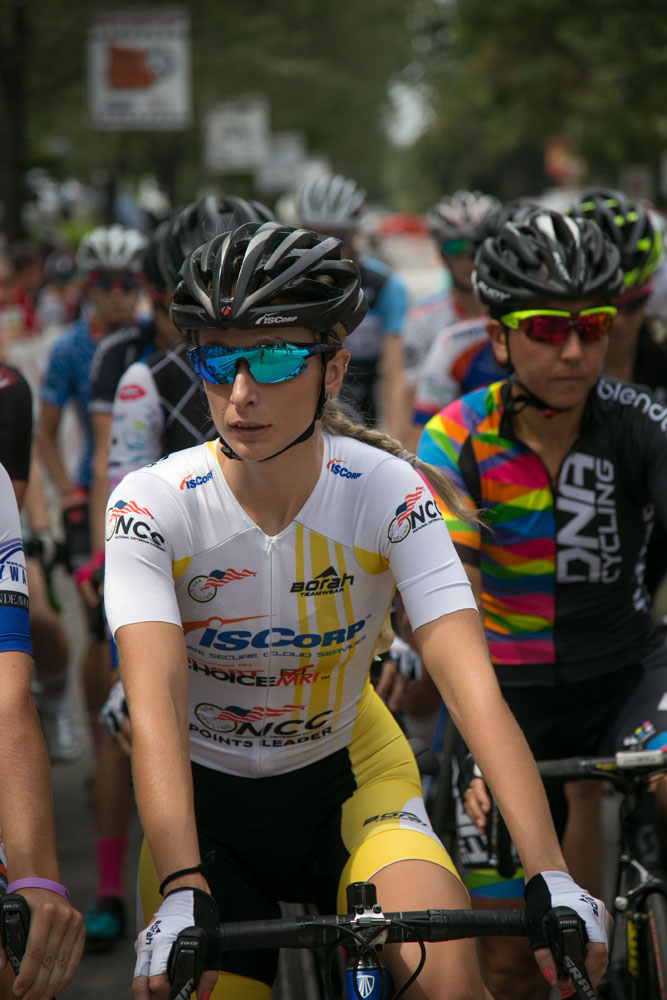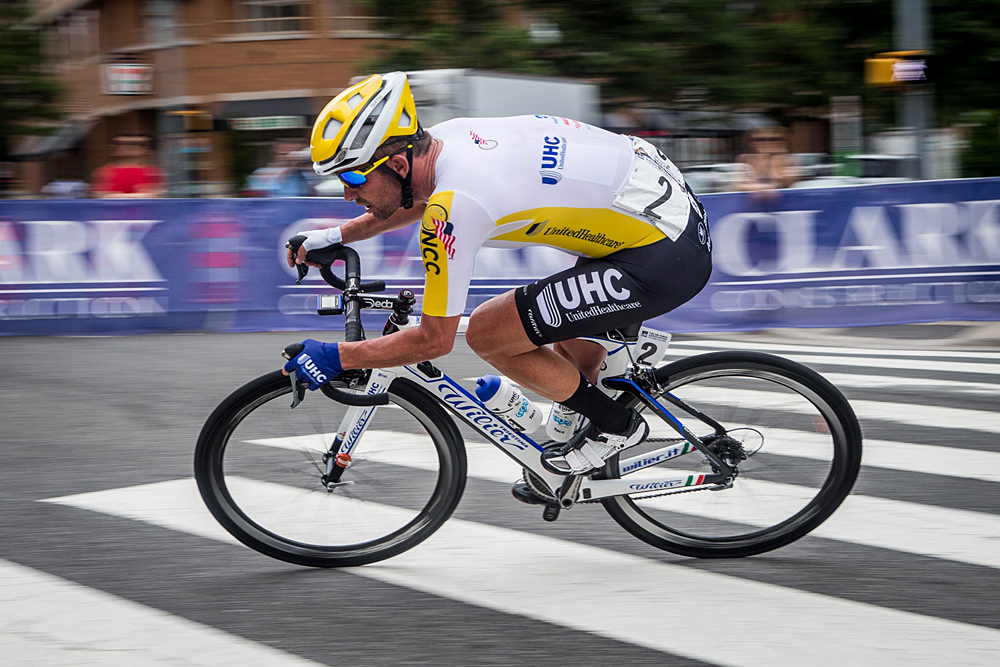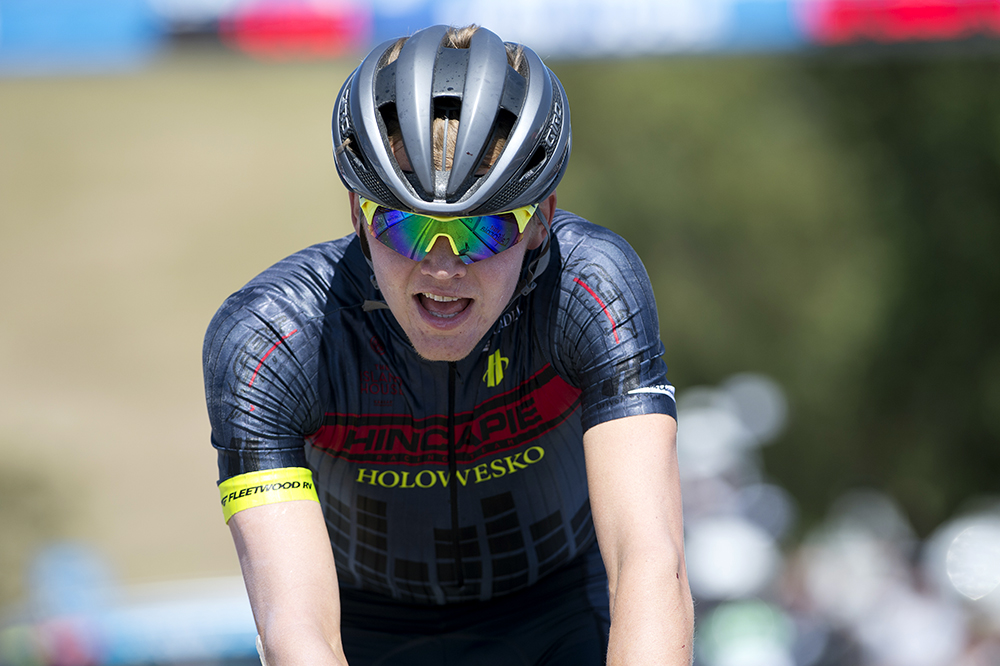USA Cycling aims for more marketable, followable national calendar in 2016
New ranking system still in discussion phase






The idea behind USA Cycling’s recently announced 2016 national calendar, which merged the National Racing Calendar (NRC) and the National Criterium Calendar (NCC), was to build a more marketable and followable calendar, according to USA Cycling's Vice President of National Events, Micah Rice.
The new national calendar will host 24 events that bring together five stage races, two road races, and 17 criteriums and omnium events into one racing calendar from April to September next year.
“Part of the reasoning behind combining the calendars was that it is a more marketable and followable piece by the media and spectators,” Rice told Cyclingnews. “It’s less complicated and kind of a single calendar of pro events.
“We are working very closely with the race directors because they really want to build that brand. The only thing that helps the race director is building the brand of everyone’s event, otherwise everyone is working in their little silo at their own event. We all kind of need to work together in order to build the brand together. “
The original NRC calendar, which included some 40 events, was separated in 2012 to allow specialists of criterium racing and the road racers to follow their own fortes. Upon receiving feedback from race directors and teams at the USA Cycling Symposium in October, they embarked on a discussion of merging the two calendars back together.
“The feedback that we have gotten from teams that do these races and race directors that are apart of these calendars has really been kind of an impetus to pull those calendars back together,” Rice said.
“By combining the two calendars, we really are not changing the number of event offered to these teams, they just happen to be the two calendars combined.”
Get The Leadout Newsletter
The latest race content, interviews, features, reviews and expert buying guides, direct to your inbox!
Omer Kem is the founder of Inspire Sports LLC, which has partnered with Cylance to create the new US-based, UCI-registered women’s team Cylance Pro Cycling. Kem hopes that the national calendar will evolve to give race promoters something tangible to show to their partners.
“In bringing the calendars back together, and letting the race promoters designate themselves as a national event, as opposed to NCC or NRC, hopefully they have something to bring to their partners and we create a calendar that the teams and promoters don’t feel divided on,” Kem said.
Rice is under no illusion that every domestic elite, Continental or Professional Continental team will be able to contest all 24 events on national calendar. Jamis director Sebastian Alexandre noted that one flaw of the new calendar was that lower budget teams will not be able to afford to go to all the races and contest the overall ranking. He would prefer a simpler national calendar of roughly 12 to 15 events.
“We know that very few teams will be able to go to every single event,” Rice said. “We have conflicts during the season where teams will have to split up into two teams to even go to these events. We understand that getting to every single one of these events is difficult and very few teams really have the ability and the budget to go to all of them. And that is why we continued to have this as a calendar; we don’t own or operate any of these events, we just try to provide a collection of the top events in the United States that teams could go to.”
Changes to the one-day road races and stage races side of the calendar include the absence of the UCI 1.1 Winston-Salem Cycling Classic and the women’s Tour of California, which will be a part of the Women’s WorldTour next year, along with the return of the Cascade Cycling Classic (and as a women's UCI 2.2) and with the addition of Anniston Fort McClellan Road Race.
Changes on the criterium and omnium side include the addition of the Oklahoma City Pro-Am Classic, Tour of America’s Dairyland, Tour of Utah Women’s Edition Criterium Classic, Thompson Criterium of Doylestown, and the absence of the Connecticut Cycling Festival.
“The only events we put on this domestic calendar are up to UCI .2 events. One important group that people keep forgetting about are these domestic elite squads, the men’s Cat 1 racers, regional teams and women’s cat 1 and 2, they are all below the UCI teams but they are all eligible to race this domestic calendar,” Rice pointed out.
“When you have a UCI .1-level race for the men that means it’s pros-only, and domestic elite teams can’t even get in. That’s not true for .2 events like Joe Martin and Tour of the Gila, which can bring in domestic elite teams.”
Rice noted that Professional Continental teams like US-based teams Novo Nordisk and UnitedHealthcare are allowed to participate in the national calendar criteriums and UCI races, but they are still not permitted to race in non-UCI road events like Redlands Bicycle Classic and the road race in Anniston.
Although USA Cycling released the 24 events that will make up next year’s national calendar, they are not yet ready to announce the ranking system for it.
"There are a lot of stakeholders in this whole thing," Rice said. "There are a number of ways to do it [create a ranking system] but we really want to make sure we do the right things for everyone. We need to discuss it more and make sure that we are doing it right.”

Kirsten Frattini is the Deputy Editor of Cyclingnews, overseeing the global racing content plan.
Kirsten has a background in Kinesiology and Health Science. She has been involved in cycling from the community and grassroots level to professional cycling's biggest races, reporting on the WorldTour, Spring Classics, Tours de France, World Championships and Olympic Games.
She began her sports journalism career with Cyclingnews as a North American Correspondent in 2006. In 2018, Kirsten became Women's Editor – overseeing the content strategy, race coverage and growth of women's professional cycling – before becoming Deputy Editor in 2023.